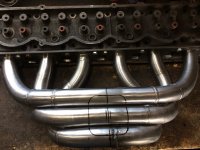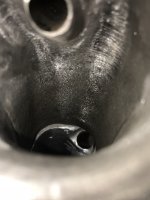The 240ci/300ci has a reputation for being “restricted”. So most people in search of better performance put on larger intake manifolds, larger exhausts, larger cams, larger valve and a ported head. The focus is almost always on CFM.
The more I analyze, the more I think we have really been missing the big issue. Airspeed. In stock form the average intake velocity is hitting a max of 200 FPS at 3,500 rpm. A motor like this really wants to be in the 300 FPS neighborhood.
As these typical performance parts get installed, CSA is almost always increased as well. Then we wonder why we can’t make the power we thought it should.
Shouldn’t we be asking ourselves how much CFM do we really need, and focus more on CSA’s?
The more I analyze, the more I think we have really been missing the big issue. Airspeed. In stock form the average intake velocity is hitting a max of 200 FPS at 3,500 rpm. A motor like this really wants to be in the 300 FPS neighborhood.
As these typical performance parts get installed, CSA is almost always increased as well. Then we wonder why we can’t make the power we thought it should.
Shouldn’t we be asking ourselves how much CFM do we really need, and focus more on CSA’s?
Last edited:



